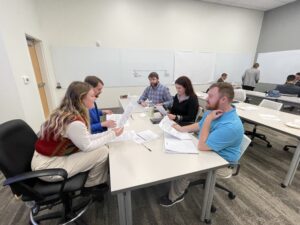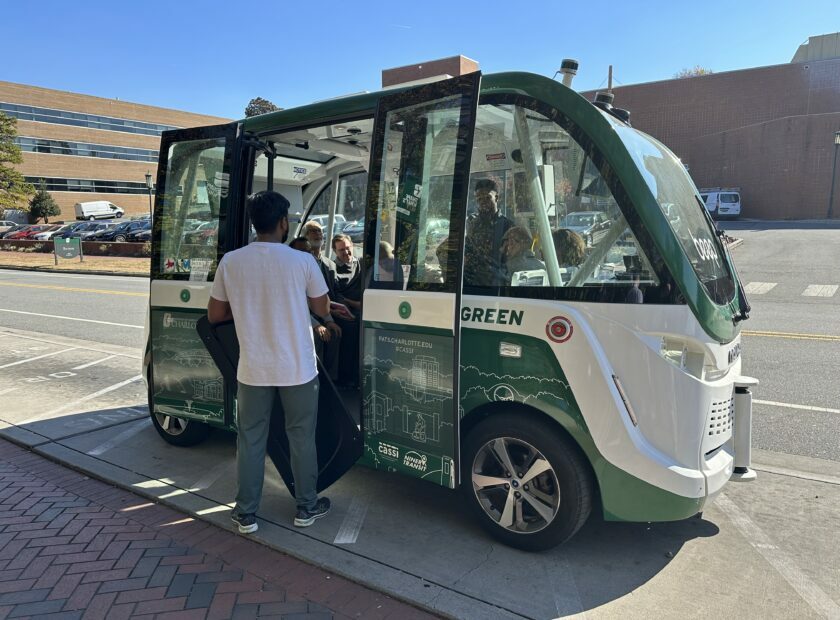The COVID-19 pandemic presented organizations with a challenge when it came to holding meetings. As a convener, much of Centralina Regional Council’s work involves bringing people together. During the nearly two years that we were unable to hold in-person meetings and events, Zoom and other virtual platforms provided a suitable alternative for engaging with our members, partners and other stakeholders.
What’s Changed Since the Pandemic
Once the pandemic was behind us, we saw an increased interest in hybrid meetings, particularly for programming such as our Regional Managers Group and our professional development series, Centralina Learns. Although we used these convenings to test the hybrid format, ensuring a meaningful experience for both in-person and virtual attendees proved difficult. Also, despite having robust videoconferencing capabilities, hybrid meetings were often cumbersome for our staff to coordinate and execute. We wanted to bring people together, but we needed to find a way to do so that would be both effective for our attendees and logistically uncomplicated for us as the organizers.
Choosing a Meeting Format
 After trying different meeting formats, we found that the approach that has worked best for certain regional meeting series includes alternating between an in-person only and a virtual only format. The meeting’s overall objective is one factor that drives the decision about which of these two formats to use. For the Regional Managers Group, we separated the meetings into two types: 1) information-sharing virtual meetings and 2) in-person networking meetings. The virtual meetings present information across a variety of topic areas. Attendees receive timely regional and legislative updates, as well as briefings on key projects, initiatives and funding opportunities. Meanwhile, the in-person meetings are designed to be experiential and focus on a specific topic. The location rotates to different host communities so that we can showcase some of our region’s amenities. These meetings feature a networking lunch, host presentations, tours and thoughtful group discussion around a specific topic.
After trying different meeting formats, we found that the approach that has worked best for certain regional meeting series includes alternating between an in-person only and a virtual only format. The meeting’s overall objective is one factor that drives the decision about which of these two formats to use. For the Regional Managers Group, we separated the meetings into two types: 1) information-sharing virtual meetings and 2) in-person networking meetings. The virtual meetings present information across a variety of topic areas. Attendees receive timely regional and legislative updates, as well as briefings on key projects, initiatives and funding opportunities. Meanwhile, the in-person meetings are designed to be experiential and focus on a specific topic. The location rotates to different host communities so that we can showcase some of our region’s amenities. These meetings feature a networking lunch, host presentations, tours and thoughtful group discussion around a specific topic.
The meeting topic is another deciding factor when determining if we will hold an event in person or virtually. For Centralina Learns sessions, some topics are better suited for an in-person format. As an example, we held a training on conflict resolution for local government staff in person because a face-to-face learning environment seemed the most appropriate for the interpersonal subject matter. On the other hand, we have held grant writing workshops virtually, a format that fits those sessions’ instructional nature.
Seeing the Impact
 Since implementing this approach, one way we have measured our impact is through the high-quality interactions we have seen in our convenings. Whether a meeting is held in person or virtually, having attendees who are highly engaged indicates that the content is relevant to their work. Likewise, the feedback we have received from participants about their experience shows us the value these meetings and events offer.
Since implementing this approach, one way we have measured our impact is through the high-quality interactions we have seen in our convenings. Whether a meeting is held in person or virtually, having attendees who are highly engaged indicates that the content is relevant to their work. Likewise, the feedback we have received from participants about their experience shows us the value these meetings and events offer.
As the world of meeting and event organizing continues to evolve in the post-pandemic era, we encourage other organizations to experiment with different approaches to convening. In addition to choosing a format based on a meeting’s objective or topic, we also recommend considering the time participants will spend away from the office. For convenings where invitees include individuals from small organizations with limited staff capacity, attending an in-person event may be a challenge. Whatever the format, the goal is always to ensure the attendees see the convening as time well spent.





